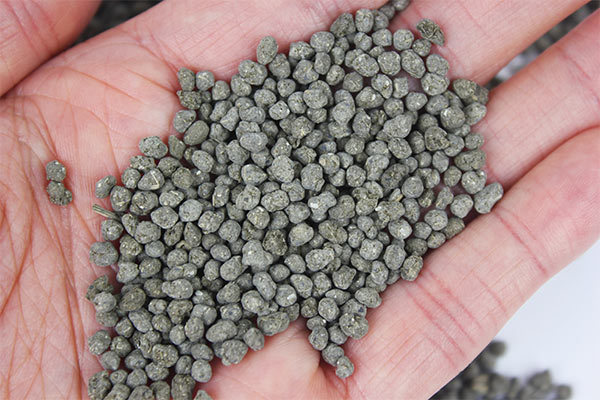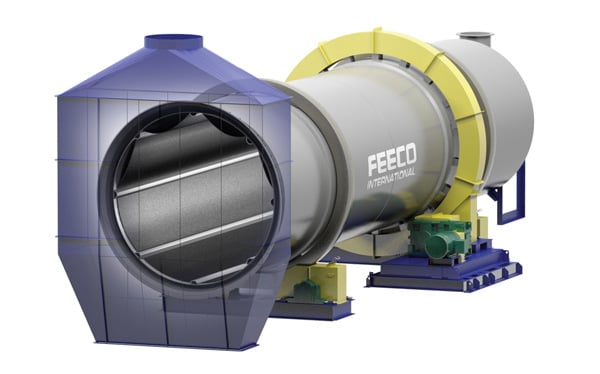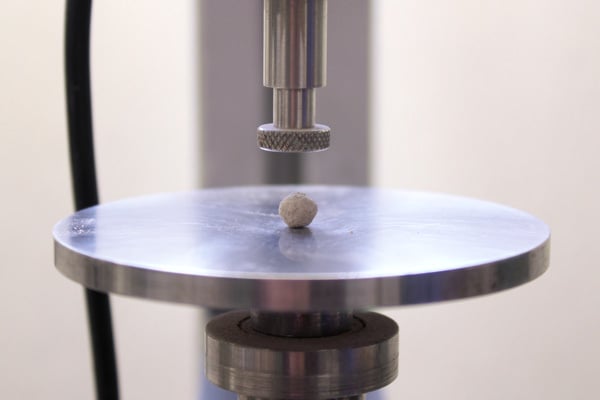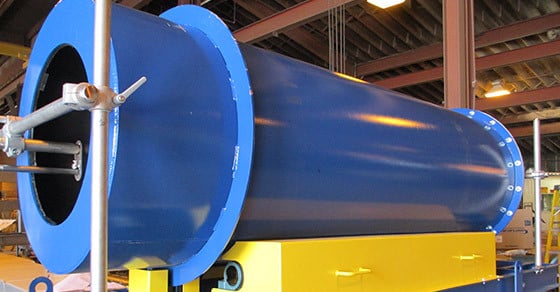Granulation drums are utilized in many industries, processing a wide range of materials into a more usable, more marketable granular form, whether it be for use as a fertilizer, chemical agent, mineral, or otherwise.
Since all materials respond differently to granulation, the design of a high-performance granulator is dependent on the careful balance of a number of different factors, making a thorough testing program crucial in the development of a commercial-scale unit.
Granulation drum testing in a facility such as the FEECO Innovation Center provides a valuable opportunity to confirm feasibility of the intended process and develop the data necessary to produce the desired results, among other benefits.
Note: The term “granulation” is used to describe a myriad of processing types. In this case, granulation refers only to wet granulation, also known as agitative, tumble-growth, or non-pressure agglomeration.
Why Granulate in a Drum?
Granulation has become an increasingly popular approach to controlling particle characteristics for various types of materials, from specialty and agricultural chemicals, to soil amendments, filter media, and so much more.
Unlike dry granulation methods, wet granulation produces a more spherical granular product. This type of granule has shown to offer several benefits that continue to lend it to premium product markets. Common advantages of this type of granule include:
- Minimal attrition and dust
- Improved flowability
- Better handling and application qualities
- Higher level of control over particle characteristics
- Easy inclusion of beneficial additives
- Greater porosity

Manure after granulation in a FEECO Granulator
A number of granulation devices are on the market, each suited to different processing goals. The granulation drum in particular is favored for producing rounded granules in high-capacity operations, accommodating throughputs in excess of 300 TPH. The granulator is also selected in settings where a greater amount of recycle is beneficial, the addition of acids or ammonia are required, or when simple operation and reliability take precedence.
The Value in Testing for Granulation Drum Design
The straightforward and reliable operation of the granulation drum can be misleading, giving the impression that there is little engineering behind it. On the contrary, the steady operation, minimal oversight, and consistent production of on-spec product are actually the result of a granulator carefully designed by an experienced supplier; in contrast to the smooth operation of a well-designed granulator, a poorly-designed granulator is rife with issues, from an inability to produce on-spec product, to a high rate of process upsets, lost production, and seemingly-endless troubleshooting. Further, not all granulation processes are economically and/or physically viable.
As a result, a thorough testing program should always be the first step in the design of a commercial-scale granulation drum, whether the unit be for a new application, or an existing one. With many interdependent variables, testing serves several purposes that ultimately help engineers to reveal the most optimal granulation drum design for the application at hand:
Assessing the Material’s Unique Response to Granulation
The secret behind a well-designed granulator is the understanding that each and every material responds differently to granulation; even the same material from different sources will exhibit variation in behavior. This variability demands that the intended feedstock for a given process be thoroughly evaluated in order to determine whether or not the intended granulation process is feasible, as well as how the granulator can be designed to work best with the unique characteristics of the material source. In some cases, this information may be available through historical data, but in most cases, the data necessary can only be gathered through testing. Raw material characteristics that affect granulation drum design include:
- Particle size distribution
- Bulk density
- Moisture content
- Chemical composition
- Abrasive or corrosive quality
- Temperature (in some cases)
- Ease of granulation
- Special material requirements (heat sensitivity, toxicity, etc.)
Testing will help to identify the parameters necessary for producing the desired granular product from the specific source of material, as well as determine whether or not a preconditioning step will be needed to bring feedstock into a specific range of parameters. Preconditioning is frequently tested as part of granulation in the FEECO Innovation Center.
Gathering Essential Process Data
Optimal granulation is achieved by using a matrix of process parameters to control granule formation based on the material’s behavior. While many factors play into the success of granulation in a drum, the most influential process data points testing focuses on include:
- Binder and material feed rates
- Percent fill
- Retention time
- Drum speed
- Drum slope
- Spray system design
- Preconditioning requirements
Many of the parameters listed above have a direct effect on the granulation drum size and design, so testing centers around identifying these parameters and determining how they can be leveraged to achieve the desired results.

3D Model of a FEECO Granulation Drum
Identifying Potential Issues & Getting to Know the Material
Materials that are successfully granulated on a batch/bench scale often present unpredictable issues upon scale-up. Pilot-scale testing is therefore used to identify these problems early, reducing the opportunity for surprises later and allowing engineers to adjust the design accordingly before the unit is built.
Similarly, testing builds a valuable familiarity with the material that can expedite future troubleshooting. For example, because testing identifies the specific range in which a material feedstock must fall for any given parameter, operators can be trained in recognizing a problem caused by an abnormality in the feedstock, or in identifying where potential for other problems might exist.
Drying Requirements
Because granulation is a wet process, a drying step is necessary. A variety of industrial dryers are available for reducing the moisture content of granular bulk solids, but the rotary dryer continues to be the preferred approach in most settings.
Rotary dryers are simple to operate, easy to maintain, offer flexibility compared to other dryer types, and have a well-earned reputation for reliability. During testing programs such as those carried out in the FEECO Innovation Center, drying requirements such as retention time, flight pattern, air flow configuration, and more, are determined as part of the process development journey.

Granule crush strength is tested after granulation and drying in the FEECO Innovation Center
Conclusion
The granulation drum is a diverse agitation agglomeration (wet granulation/tumble-growth agglomeration) device applied in an increasing number of applications. As numerous material characteristics and process parameters affect granulation, testing is an essential component in the design of any commercial-scale granulator, not only gathering the necessary material and process data, but also helping to identify potential issues prior to scale-up.
FEECO is the world’s leading provider of granulation drums. Each granulator is designed around the specific requirements of the material and application at hand. Data gathered during testing in the Innovation Center is used to engineer and fabricate a commercial-scale granulation drum uniquely suited for optimal, consistent, and reliable performance. For more information on our granulation drums or testing programs, contact us today!



